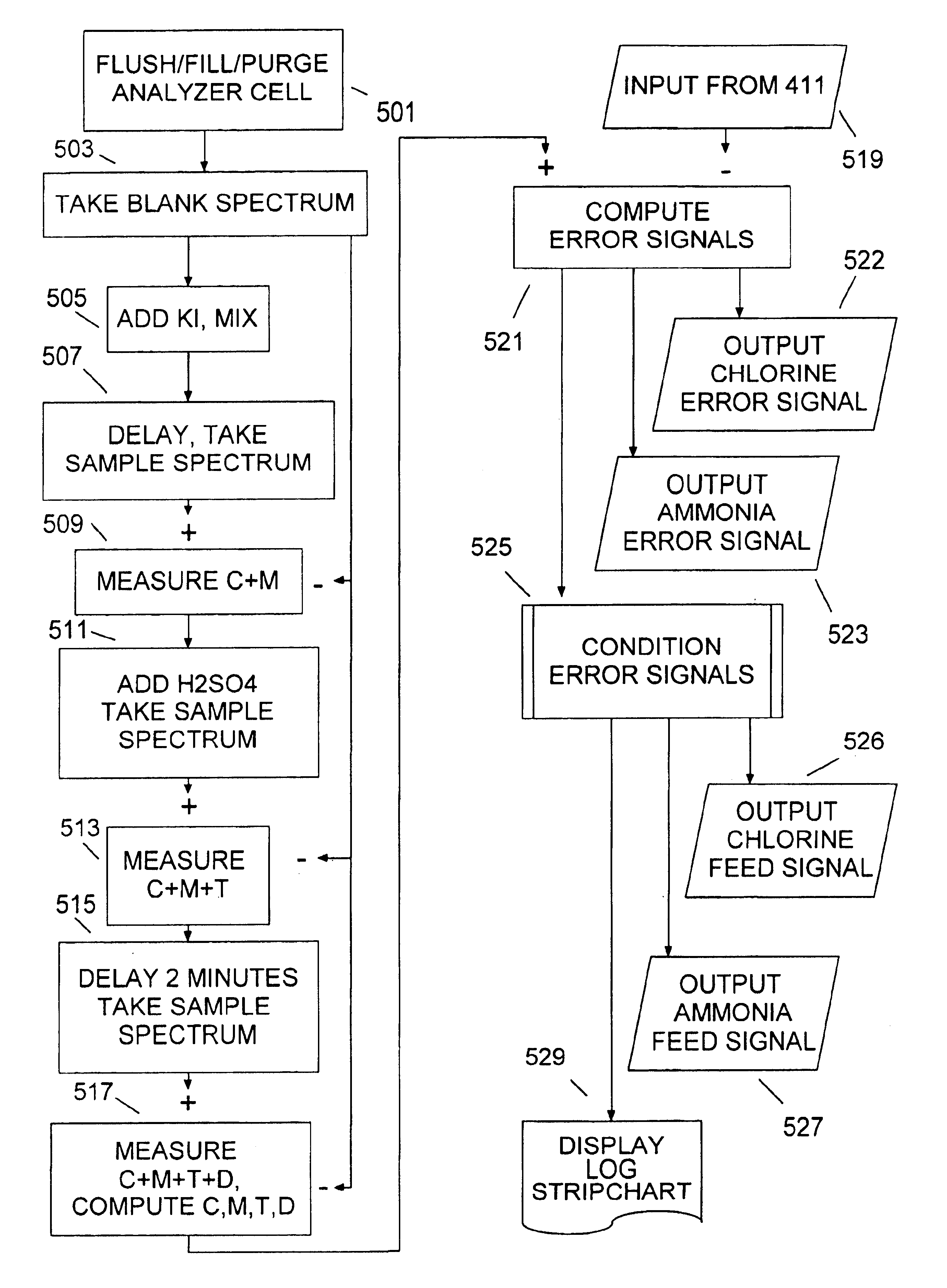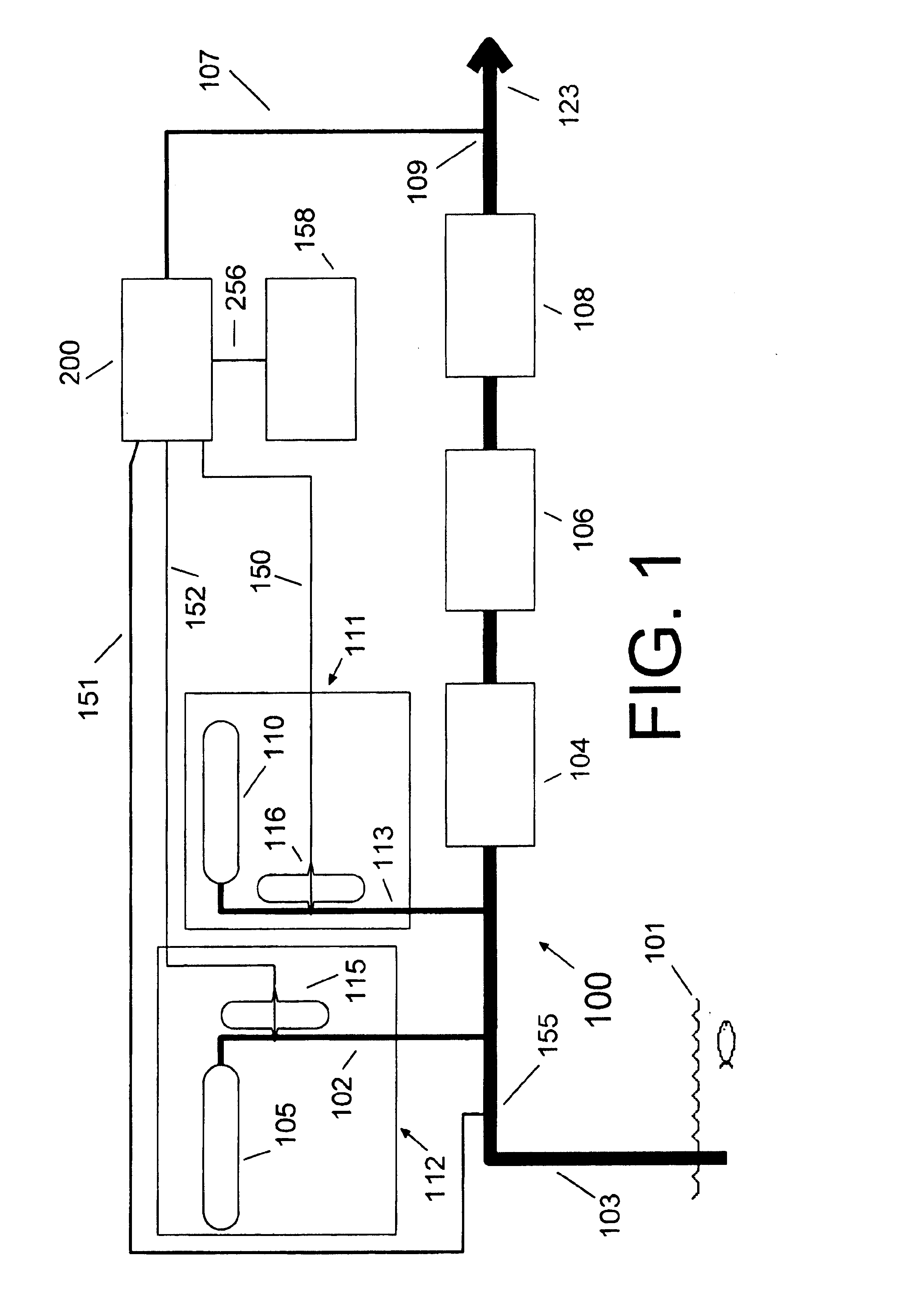Water chloramination control system
a chlorination control and water technology, applied in the field of water chlorination control system, can solve the problems of inability to achieve general purity, inability to achieve a 1:1 molar inability to achieve optimal ratio of chlorine and ammonia, so as to avoid the problem of non-monotonic measurement and reduce both chlorine and ammonia
- Summary
- Abstract
- Description
- Claims
- Application Information
AI Technical Summary
Benefits of technology
Problems solved by technology
Method used
Image
Examples
Embodiment Construction
[0027]FIG. 1 illustrates a water chlorination plant 100. Water 101 in the form of a river, lake, underground aquifer, well, or other source, is pumped through pipe 103 to the plant 100. A chlorine feed system 112 comprises chlorine source 105, such as a chlorine tank, feeding chlorine through chlorine feed line 102, controlled by chlorine control valve 115, into the water. An ammonia feed system 111 comprises ammonia source 110, such as an ammonia tank, which feeds ammonia through ammonia feed line 113, controlled by ammonia feed valve 116, into the water. The water may receive additional processing such as aeration 104, filtration 106, or fluoridation 108, and exits the plant 100 through pipe 123 to a municipal water supply or other customer. Programmable-logic-controller (PLC) 158 provides overall control of the chlorination plant 100.
[0028]Sample line 107 brings a sample of the outgoing water from sample point 109 to analyzer 200, which computes an ammonia feed signal 150 control...
PUM
| Property | Measurement | Unit |
|---|---|---|
| reaction time | aaaaa | aaaaa |
| pH | aaaaa | aaaaa |
| pH | aaaaa | aaaaa |
Abstract
Description
Claims
Application Information
 Login to View More
Login to View More - R&D
- Intellectual Property
- Life Sciences
- Materials
- Tech Scout
- Unparalleled Data Quality
- Higher Quality Content
- 60% Fewer Hallucinations
Browse by: Latest US Patents, China's latest patents, Technical Efficacy Thesaurus, Application Domain, Technology Topic, Popular Technical Reports.
© 2025 PatSnap. All rights reserved.Legal|Privacy policy|Modern Slavery Act Transparency Statement|Sitemap|About US| Contact US: help@patsnap.com



